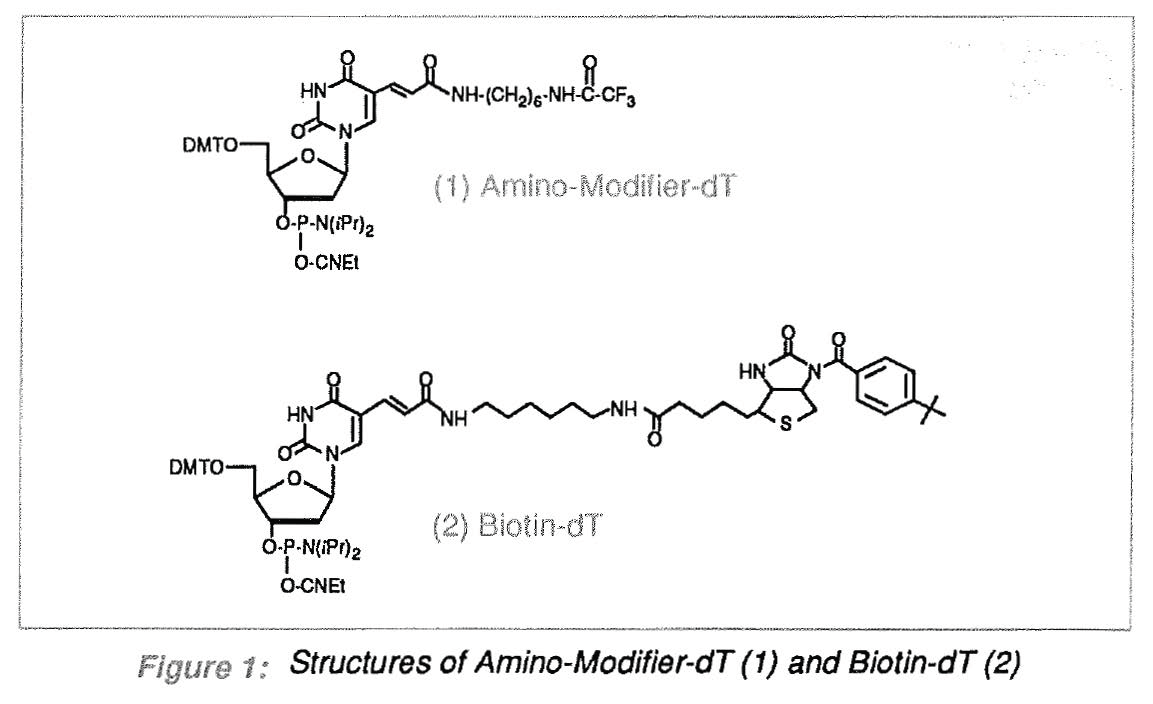Glen Report 4-21: Biotinylation in the Sequence and at the 3'-Terminus
Despite their relatively high price, biotin phosphoramidites have achieved rapid and enthusiastic acceptance in the research community. This is undoubtedly because of the simplicity with which these products are adapted to automated synthesis and associated rapid purification techniques. Applications to which our biotin phosphoramidites have been applied include:
1) Diagnostic probe development including occasions where multiple biotins may be introduced into a probe to enhance sensitivity of ultimate detection.
2) Introduction of biotin at the 5'-terminus of a primer prior to PCR amplification and trapping of the derived biotinylated DNA using streptavidin magnetic beads.
3) Introduction of biotin at the 3'-terminus of a probe capable of blocking chain extension in a PCR experiment.
Although branched biotin phosphoramidites may be inserted in the actual oligonucleotide sequence to produce biotinylated abasic sites, it is conceivable that significant disruption of hybridization to the complementary strand may occur. Our preference was, therefore, to introduce the biotin molecule at sites in the oligonucleotide that are removed from duplex formation. It was natural for us to look to a biotinylated version of Amlno-Modlfler-dT (1) to achieve these goals since that modified nucleotide is known1 to cause minimal disruption of hybridization.
Simple addition of biotin to Amino-Modifier-dT gave a product with low solubility in acetonitrile, making the product unacceptable for use in automated synthesis. Protection of the N1-position of biotin with a lipophylic group seemed likely to induce higher solubility. This was confirmed in a report2 on a biotinylated ribonucleoside·monomer and led to the synthesis and introduction of Biotin-dT (2) for the production of oligonucleotides biotinylated within the sequence.

It should be noted that we have found this product to be highly susceptible to deactivation by moisture in the diluent acetonitrile. Biotin-dT will, therefore, be supplied with a vial of anhydrous acetonitrile for use as diluent
Using a branched biotin phosphoramidite, biotin may be introduced simply at the 3'-terminus of a desired probe but it is necessary to use a non-coding deoxynucleoside support for the synthesis. As a more direct synthetic route, we have introduced Biotin-CPG for the preparation of oligonucleotides containing biotin at the 3'-terminus. This product is available both in columns and in bulk.
References
(1) J. Telser, K.A. Cruickshank, LE. Morrison, and T.L. Netzel, J. Am. Chem. Soc., 1989, 111, 6966-6976.
(2) U. Pieles, B.S. Sproat, and G.M. Lamm, Nucleic Acids Res., 1990, 18, 4355-4360.
Product Information
Amino-Modifier C6 dT (10-1039)
Biotin-dT (10-1038)
Biotin-CPG (20-2951) has been discontinued. Please see:
BiotinTEG-CPG (20-2955)

